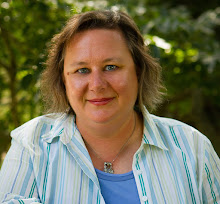I'm fresh back from the Mid-Am Horticultural Trade Show and it was a great experience! I managed to sit in on quite a few classes, which was helpful for the 'Going Green in the Garden' class I just taught at the park district.
'Sustainable' seems to be the catch word for anything environmental or 'green' nowadays. I think it is quickly getting overused. However, the Green Industry (growers, landscapers, garden centers, tree companies, etc.) isn't exactly a 'green' industry. It changing slowly, though. Big box retailers are putting pressure on suppliers to use more eco-friendly pots and materials. Customers are more and more concerned about plants that are grown locally. It does make me ponder, how do we become more conscious of our carbon footprint and yet still maintain profitable business practices?
Education seems to be the biggest opportunity and biggest hurdle. The Chicago area is ahead of the rest of the country on sustainable landscapes. Why? Because we have so little of our original ecosystems. Daniel Burnham's plan called for saving the lakeshore for the people. We have the forest preserves, parks, and natural areas but only a few hundred acres of original prairie and savannah. People here are working to restore our native ecosystems on public and private lands. Yet, I come across folks who insist on spraying for any and every insect pest. Plants should be clean, perfect, and colorful. Well, folks, plants are certainly NOT perfect. Neither are people or animals. You can't have a butterfly garden without caterpillars eating your leaves.
I urge you to get to know your plants, both the ones in your yard and the ones in your neighborhood or workplace. Is it worth the headache of planting a rhododendron if you have to fertilize, water, screen it from winter winds, and prune it year after year? Wouldn't a native viburnum be happier there? So what if there's a few holes in the leaves or you get little red galls on the maple? Insects feed birds. One red oak tree feeds 525 species. Norway maples, not nearly as many.
Subscribe to:
Post Comments (Atom)




No comments:
Post a Comment